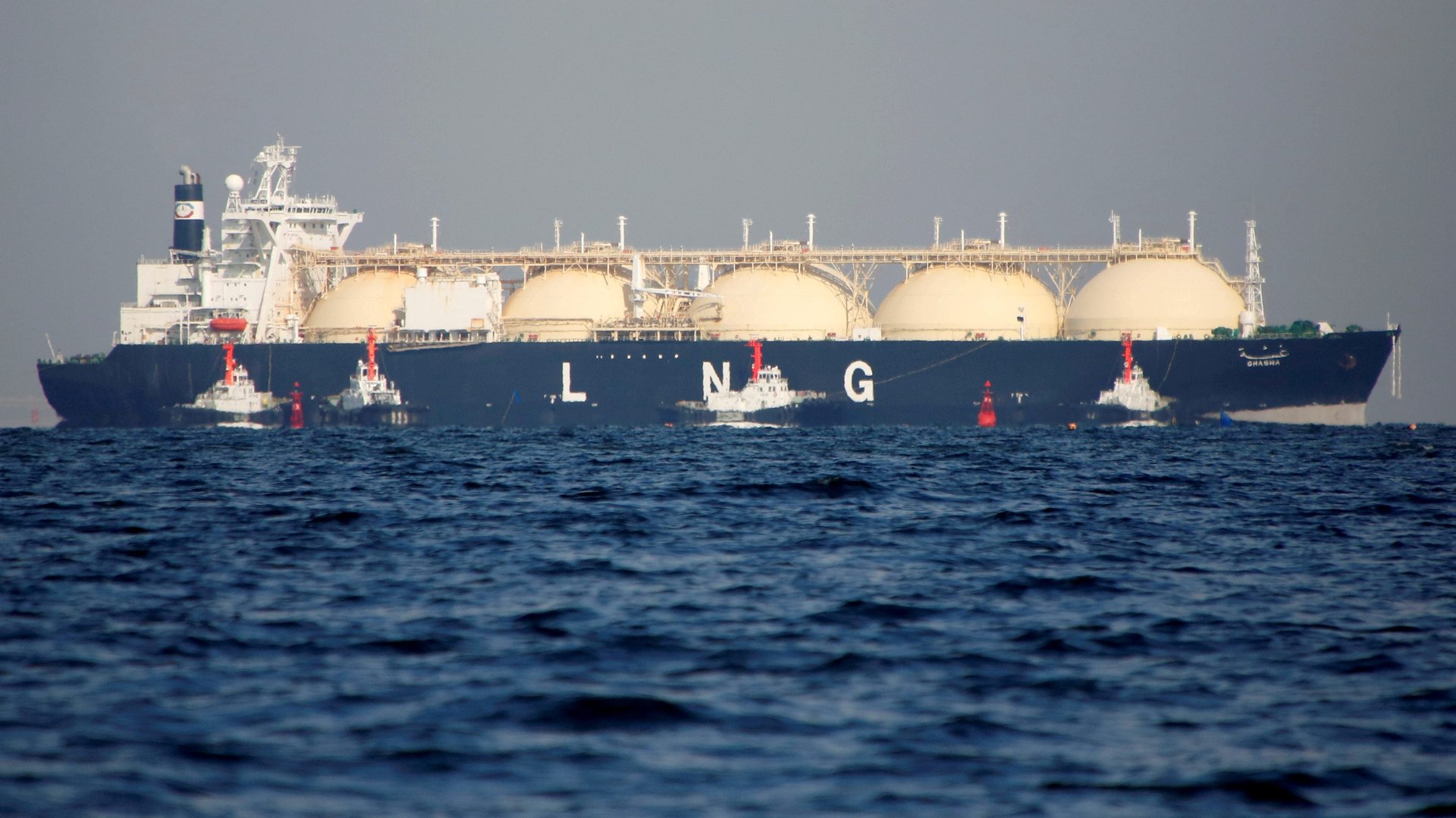LNG terminals are a ticking time bomb for investors
Many of the world’s most expensive fossil fuel projects are hitting the skids, a sign that energy-hungry developing nations in Asia and investors in the EU and US are increasingly wary that liquified natural gas (LNG) import-export terminals could turn into multibillion-dollar boondoggles.


Many of the world’s most expensive fossil fuel projects are hitting the skids, a sign that energy-hungry developing nations in Asia and investors in the EU and US are increasingly wary that liquified natural gas (LNG) import-export terminals could turn into multibillion-dollar boondoggles.
Liquified natural gas (LNG) is the last great fossil fuel gold rush. As countries rich and poor look for ways to phase out their use of climate-killing coal for electricity production, many see natural gas as a natural second choice. In order for gas to be traded between major producers like the US, Qatar, Russia, and centers of demand in Europe, southeast Asia, and elsewhere, it must be converted to liquid form and packed into cargo ships.
The gas industry projects that global demand for LNG could double by 2040, and dozens of massive export-import terminals, each with a price tag in the tens of billions of dollars, are under development worldwide.
Many LNG export-import terminals are getting delayed or canceled
The trouble is, there could be a lot more terminal-building activity in the pipeline than the global energy market actually requires. A single terminal currently under construction in Qatar, which will be the world’s largest when it comes online in 2025, could eat up one-third of future demand growth by itself.
At the same time, LNG’s prospects are getting shakier as more governments commit to decarbonizing their economies, and especially in the wake of a dramatic May report from the International Energy Agency—whose forecasts carry a lot of weight with energy investors and policymakers—that recommended no new fossil projects be approved after 2021.
Primarily as a result of these trends, 38% of global proposed LNG terminals have either been canceled or are experiencing significant delays in their final investment decision, according to a June 24 report from Global Energy Monitor, a Bay Area data-crunching nonprofit. Those delays—mostly in the US and Canada, but also including projects in Mozambique, Papua New Guinea, Mexico, and elsewhere—are a sign that investors are getting cold feet.
“LNG was sold to policymakers and to investors as a safe, clean, secure bet,” Lydia Plante, a research analyst at GEM, who authored the report, said in a statement. “Now all those attributes have turned into liabilities. The sheer size of the projects has exposed investors to catastrophic losses.”
US LNG can’t compete with renewables
US-based terminals are in a particularly tough spot because the cost of producing gas in the US is much higher than in the Persian Gulf and Russian Arctic, giving terminals in those places a decisive edge among LNG-hungry customers in places like Bangladesh and Japan. A proposed terminal in Texas, for example, was canceled in March because its developers failed, after six years of work, to line up any long-term purchasing contracts.
Meanwhile, with the cost of solar and wind energy plummeting, LNG terminals run the risk of becoming obsolete years or even decades before they pay back their costs. In short, any terminal that isn’t moving gas within the next couple of years probably never will.